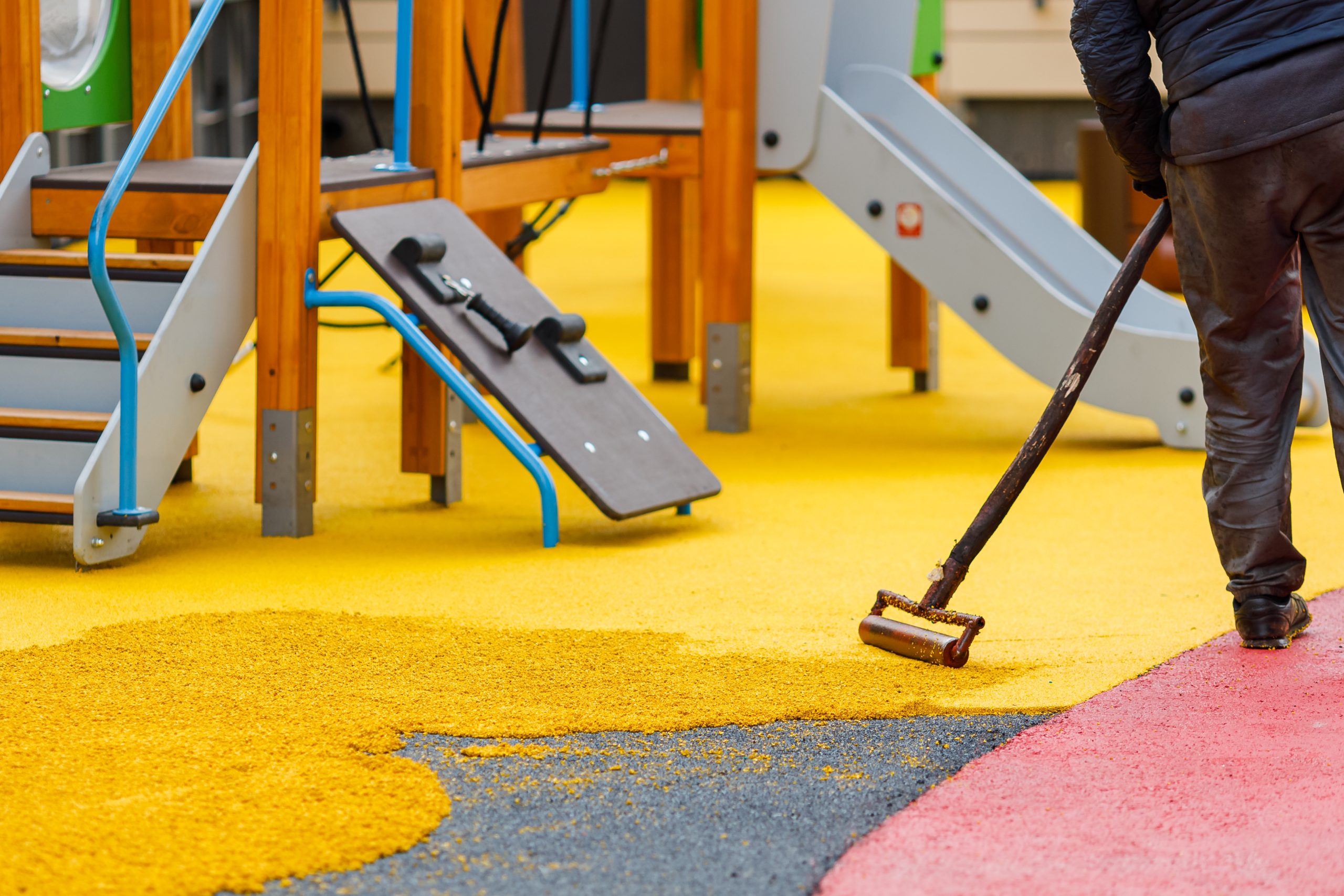Rubber flooring is a durable, long-lasting investment for gyms, playgrounds, and high-traffic spaces—but its lifespan depends heavily on proper care.
Neglecting maintenance can lead to premature wear, stains, or even safety hazards.
To help you protect your flooring and maximize its value, here are 5 essential maintenance hacks tailored for rubber surfaces, including cleaning routines, stain removal tricks, and repair tips.
1. Daily and Weekly Cleaning Routines
Why it matters: Dirt, debris, and moisture are the biggest enemies of rubber floors. Grit can grind into the surface over time, while spills can leave stains or encourage mold growth.
For gyms:
- Daily: Sweep or vacuum (use a soft-bristle attachment) to remove dust, sand, and gym chalk.
- Weekly: Mop with a pH-neutral cleaner diluted in warm water. Avoid harsh chemicals like bleach or ammonia, which can degrade rubber.
- Pro tip: Place walk-off mats at entrances to trap dirt before it reaches the flooring.
For playgrounds:
- Daily: Remove leaves, twigs, and litter to prevent organic stains or moisture buildup.
- Monthly: Hose down surfaces and scrub with a mild detergent (e.g., dish soap) to remove dirt. Allow to air dry completely.
Key takeaway: Consistent cleaning prevents abrasive damage and maintains slip resistance.
2. Stain Removal: Tackling the Tough Stuff
Rubber is stain-resistant, but stubborn marks like ink, grease, or gum can linger if not treated properly.
Common stains and solutions:
- Oil/Grease (common in gyms): Blot with a paper towel, then apply baking soda or cornstarch to absorb residue. Scrub gently with a soft brush and dish soap.
- Ink/Markers: Use isopropyl alcohol (70% or less) on a microfiber cloth. Test on a small area first.
- Chewing Gum: Freeze the gum with an ice pack until it hardens, then scrape it off with a plastic tool.
- Organic Stains (playgrounds): Mix equal parts water and white vinegar, spray, and scrub.
Avoid: Steel wool, abrasive pads, or acidic cleaners (e.g., vinegar in excess), which can scratch or discolor rubber.
3. Prevent Damage Before It Happens
a) Furniture and Equipment Protection
- Use rubberized casters or furniture pads under heavy gym equipment to prevent dents and tears.
- Avoid dragging weights or machines across the floor—lift or use a trolley.
b) UV Protection for Outdoor Surfaces
- Playgrounds and outdoor gyms: Apply a UV-resistant sealant annually to prevent fading and cracking from sun exposure.
c) Moisture Control
- Indoor gyms: Use dehumidifiers in humid climates to prevent moisture buildup under tiles.
- Outdoor surfaces: Ensure proper drainage to avoid water pooling, which can weaken adhesive bonds.
4. Repair Minor Damage Quickly
Small tears or loose tiles can escalate into bigger problems if ignored.
DIY fixes:
- Loose Tiles: Re-adhere with a rubber flooring adhesive (ensure the area is clean and dry first).
- Minor Cuts/Scratches: Fill with a rubber repair compound (available at hardware stores) and smooth with a putty knife.
- Curling Edges: Weight down the affected area with heavy objects until the adhesive sets.
When to call a pro: For large cracks, widespread lifting, or embedded debris that compromises safety.
5. Seasonal Maintenance for Longevity
Winter (for outdoor playgrounds/gyms):
- Remove snow with a plastic shovel (never metal!) to avoid scratches.
- Avoid salt-based deicers, which can degrade rubber—opt for sand or non-corrosive alternatives.
Summer:
- Rinse playground flooring frequently to cool the surface and prevent overheating (rubber can get hot in direct sun).
Year-round:
- Inspect floors quarterly for wear patterns, loose tiles, or mold growth.
Bonus: Why Maintenance Pays Off
- Cost savings: Replacing rubber flooring costs 3–5x more than routine upkeep.
- Safety: Well-maintained floors retain slip resistance and shock absorption.
- Aesthetics: Clean, vibrant floors enhance the appeal of gyms and playgrounds.
FAQ
Q: Can I use a pressure washer on rubber flooring?
A: Yes, but only on outdoor surfaces and with a low-pressure setting (under 1,200 PSI). High pressure can damage interlocking tiles or erode granules.
Q: How do I remove odors from gym flooring?
A: Sprinkle baking soda, let it sit for 15 minutes, then vacuum. For persistent smells, use an enzymatic cleaner designed for rubber.
Q: Should I seal indoor rubber floors?
A: Not usually—indoor tiles are non-porous. Focus on regular cleaning instead.
Final Tip: Create a maintenance schedule and train staff (or homeowners) on these best practices. A little effort today can add years to your flooring’s life!
Need professional-grade rubber flooring? Explore ACCT Global’s range of gym tiles, playground surfaces, and SBR granules—engineered for durability and easy maintenance.


Leave a Reply